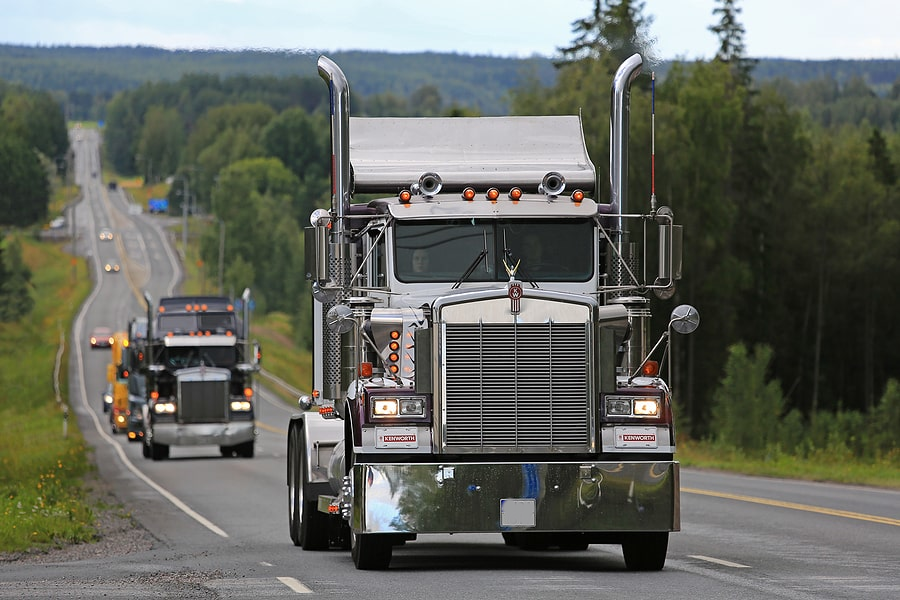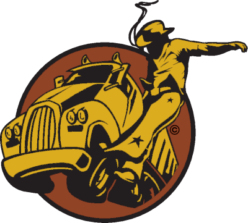
All to often application errors lead to extra start up costs, delays and lost income.
Many who contact me through my website LearnToTruck.com or call for an insurance quote have never applied for or had a USDOT (United States Department of Transportation) or MC (Motor Carrier) number before. It is imperative for anyone who wishes to have a USDOT and/or a MC number to be fluent and understand all the different entities and compliance with those entities they will now be required to meet. To help with that, if they have not already hired an “agent” to apply for their USDOT & MC numbers, I always encourage everyone to complete the application themselves. Avoiding fines and penalties from entities such as the FMCSA, IRP, IFTA, UCR, etc. by using the excuse that you didn’t know or the “agent” made a mistake is the same as trying to use the excuse “I didn’t see a speed limit sign” to avoid getting a speeding ticket. Speaking from experience, it’s typically not going to work in your favor. Not to mention the huge amount of money saved by avoiding these “agents.” I have seen these “agents” charge anywhere from $500.00 to $1,500.00 or more in addition to the fees required by each entity just to get started. Then they will point out a supposed need to continue to use their services throughout the year. What they don’t tell you is that it is just as easy for you to complete all the required tasks by giving the exact same information to those entities directly.
Before applying, it’s important to understand that some of the most insignificant or minor errors and/or deceptions can cause some of the longest delays in getting your “Operating Status” to “Authorized for Property” (the most common authorized status for OTR operations). Until your status is updated by the FMCSA you are not compliant and as such can not begin operations. That is to say, you can’t haul loads and generate income. In the Army we had a saying, “fast is slow and slow is fast.” That saying is applicable here as well. When we do things in haste mistakes typically happen. Always review every entry for typos, accuracy and duplications.
Typos – These are most common errors I see. Some are as simple to see and identify, while others are far more difficult to spot.
- Misspelling – Auto correct can be our worst enemy. Always verify the spelling of every entry before moving on to the next field.
- Punctuation – Whether or not a comma, period, hyphen, etc. is or isn’t present can cause serious headaches.
- Spaces – Even a missing or extra space between words or letters can cause some of the biggest headaches to correct. Mainly because they are very difficult to locate.
Accuracy – These are the second most common errors and can be the most time consuming and down right aggravating to correct. They can be an honest mistake or a misunderstanding of what is being asked on the application or they can be deceptions. NEVER be deceptive! It will cause increases in your insurance premium and can potentially be compliance violations. Since accuracy relates to every entry and selection you make, be sure to go slow and double check your work.
- Entity Type – “Motor Carrier of Property (except Household Goods)” is the most common entity type. Occasionally an applicant who is hauling new furniture from a manufacture to a warehouse will incorrectly believe this means they are a “Motor Carrier of Household Goods (Moving Companies)” and select the wrong entity type. Be sure to know which entity type is correct for your operation before beginning the application.
- DBA (Doing Business as) – This is the most frequent accuracy error and comes in many forms. The best way to avoid DBA errors is not to use a DBA. That said, here are the 3 most common DBA errors.
- The DBA should NEVER be the exactly the same as the company name. If my company was “W. Joel Baker, Inc” I may want to use a DBA of “W. Joel Baker Trucking.” If they are the same name some insurance companies will not even provide a quote.
- The DBA should NEVER be a second corporation. If my company was “W. Joel Baker Trucking, Inc” and I add a DBA of “Joel’s Express, Inc” that suggests there could be two separate corporations attempting to use this USDOT and/or MC number.
- NEVER enter “same,” “same as company name,” “none,” “N/A,” or any other variation. If you are not using a DBA the field must be left blank. ANY entry you put in the DBA field becomes your “Doing Business as” name.
- Company Address – This is the most common form of deception. NEVER use a virtual or alternate address as a company address. This is the legal address for the company where all required company records and FMCSA required verifying documents are to be stored, maintained and ready for inspection by any entity such as USDOT, FMCSA, IRP, IFTA, etc.
- Mailing Address – Only use a different mailing address if you utilize a USPS PO Box, local UPS store Box, etc. Otherwise you appear to be hiding something or potentially operating as a chameleon carrier. Especially if you are using an out of state mailing address.
- HAZMAT – Most generally, this error usually happens by auto transporters. By both those who only haul cars and by those who haul them occasionally. Autos are a class 9 HAZMAT. Class 9 HAZMAT does not require placards but does require more than the standard minimum $750,000.00 in BIPD auto liability insurance filings for those over 26,001 lbs. Auto transporters, even those who only haul cars 2 or 3 times a year, are required to declare class 9 HAZMAT and have $1,000,000.00 in BIPD auto liability insurance.
Duplications – Address duplications happen multiple times a day. Carefully read the address instructions and verify your entry(s).
Some find it helpful to have a few things written down or in a document on their computer before beginning the application. Such as:
- Company name with correct spelling and punctuation
- If one is desired, a company DBA
- Company address (and mailing address if different)
- Commodities (cargo) intended to haul
- Identify any possible HAZMAT. Both those that require placards and those that do not (class 9).
- Choose more than general freight from the list provided by the FMCSA.
- If necessary, using the “other” option, specify any type of unique or special cargo that does not adequately fit into one of the choices provided.
- Company address (and mailing address if different)
One way to avoid some of the most-common errors could be to be fall back on tried-and-true filing methods, setting aside the convenience and speed of the agency’s online forms in favor of the printed (or pdf version of the) authority application. Manually filling out the printed form, or the pdf version, means someone at FMCSA itself will be directly involved in entering that information into its system’s central registration system. If they introduce errors, the paper trail back to your original form might even save you money on a name change, for instance, if the error can be proven to be theirs and not your own. (Yes, it’s true that some errors you might have to actually pay to correct.)
Once the FMCSA application is complete, it’s highly advisable to request your new USDOT PIN immediately. With that PIN many of the simple errors such as duplications, typos, address, company name, etc. can all be corrected online quickly and fairly easily.
I have seen just as many application errors by “agents” as by those who complete the application themselves. As I mentioned earlier, I always recommend completing all regulatory and compliance responsibilities as possible. By doing so it significantly reduces operating costs while simultaneously educating the new company owner as to all that is involved to operate and be compliant. That education is vital because of the countless bad actors out there who charge for services under the guise of “compliance.” All to frequently it’s more about how to charge the new company for additional services because the new company is unaware of what is and is not required to be compliant.
To get more great business tips and trucking news visit Overdrive extra!![]()
